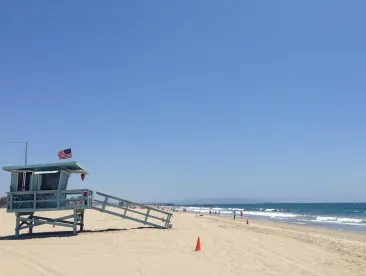On December 12, 2019, the New Jersey Department of Environmental Protection (“NJDEP”) released a report discussing historical sea-level rise (“SLR”) in New Jersey and estimating SLR for the next 100+ years. The Rising Seas and Changing Coastal Storms report (“Report”) was commissioned by NJDEP and prepared by Rutgers University’s New Jersey Science and Technical Advisory Panel.
The historical data provided in the Report evince New Jersey’s particular vulnerability to SLR, as SLR along its coast has consistently remained higher than the total change in the global average sea-level. For example, from 1911 to 2019, SLR along the New Jersey coast rose 17.6 inches (1.5 feet) compared to 7.6 inches (0.6 feet) globally. In addition, over the last 40 years, the average rate of SLR on the New Jersey coast was 0.2 inch/year compared to 0.1 inch/year globally.
According to the projections in the Report, it is likely that SLR in New Jersey will continue to rise but at even higher rates over the next 30 years. The Report estimates that there is, at minimum, a 66% chance that New Jersey will experience SLR of 0.5 to 1.1 foot/feet between 2000 and 2030, and 0.9 to 2.1 feet between 2000 and 2050.
Interestingly, the Report presents three different scenarios when taking into account SLR projections after 2050. The Report states that such projections “increasingly depend upon the pathway of future global greenhouse gas emissions.” Under a “high-emissions scenario, consistent with the strong, continued growth of fossil fuel consumption,” New Jersey will likely experience SLR of 1.5 to 3.5 feet between 2000 and 2070, and 2.3 to 6.3 feet between 2000 and 2100. Under a “moderate-emissions scenario, roughly consistent with current global policies,” New Jersey will likely experience SLR of 1.4 to 3.1 feet between 2000 and 2070, and 2.0 to 5.2 feet between 2000 and 2100. Under a “low-emissions scenario, consistent with the global goal of limiting to 2°C above early industrial (1850-1900) levels,” New Jersey will likely experience SLR of 1.3 to 2.7 feet between 2000 and 2070, and 1.7 to 4.0 feet between 2000 and 2100.
As stated by Governor Phil Murphy in NJDEP’s press release regarding the Report, “New Jersey is extremely vulnerable to the impacts of climate change and we must work together to be more resilient against a rising sea and future storms.”






 />i
/>i

